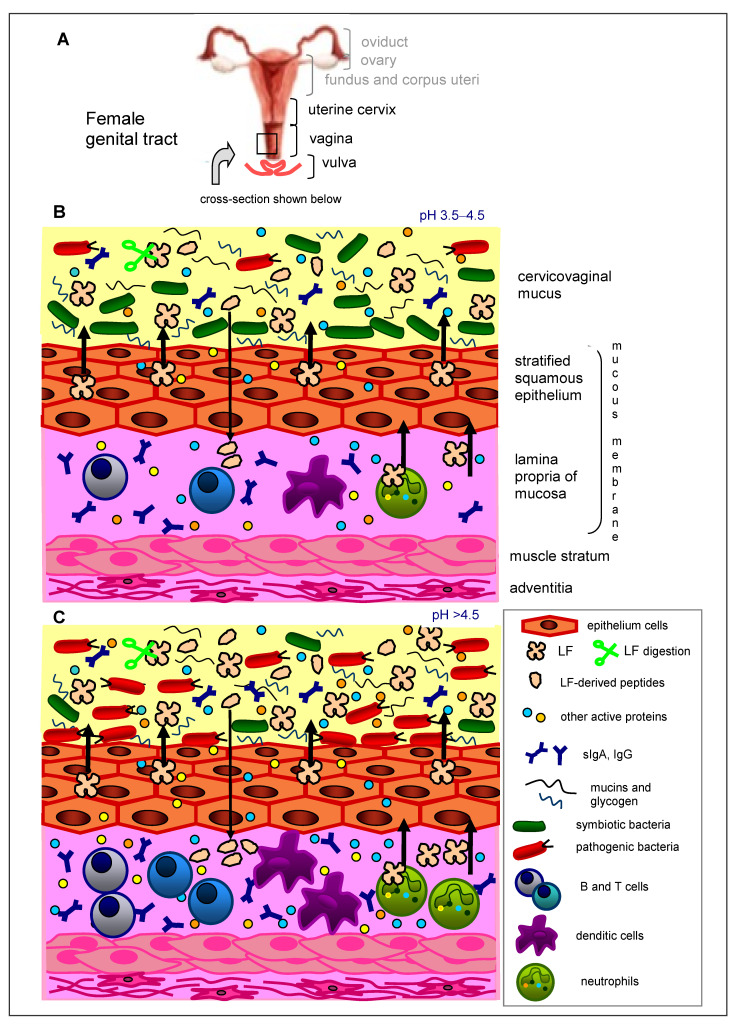Figure 1.
The female genital system with the organs of its lower part (genital tract) (A) and the elements of innate immunity in the healthy (B) and infected (C) genital tract. (B) Healthy vaginal and cervical epithelia are protected by a layer of cervicovaginal mucus. Protection against pathogenic viruses, bacteria, fungi and parasites is secured by immune cells (mainly neutrophils, dendritic cells, NK cells and lymphocytes) in the lamina propria of the mucous membrane. The epithelial cells secrete polysaccharides (mucins and glycogen), and the epithelial and immune cells secrete antimicrobial peptides (as LF, SLPI, SP-A and lysozyme), cytokines/chemokines (as IL-1, IL-6, IL-8), and acute phase proteins (such as serum amyloid A and haptoglobin). In the mucus, numerous symbiotic bacteria reside (mainly several genera from Lactobacillus spp.) that metabolize glycogen into lactic acid, which renders the genital tract environment acidic (~pH 3.5–4.5). The immune cells and symbiotic microbiota cooperate to prevent microbial invasion of the uterus and vagina. (C) During bacterial vaginosis/vaginitis, the number of pathogenic bacteria increases and that of symbiotic bacteria decreases; these perturbations of the vaginal microbiota lead to increased vaginal pH > 4.5, as well as concomitant levels of immune cells and antimicrobial proteins, proinflammatory cytokines and acute-phase proteins.

